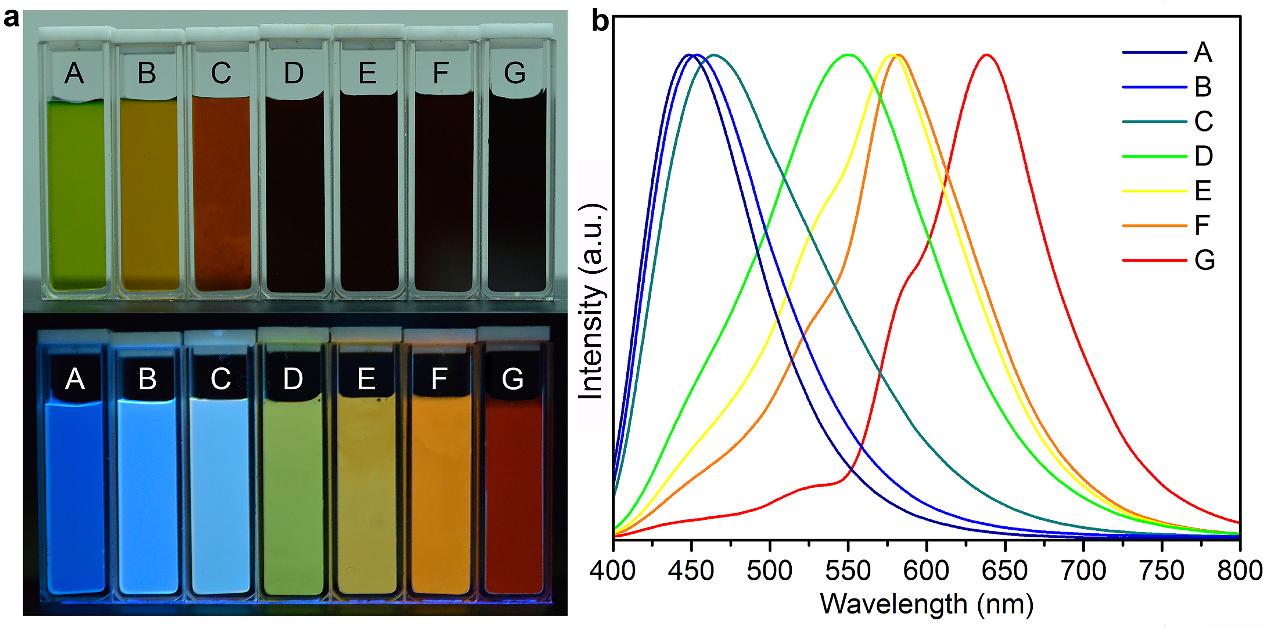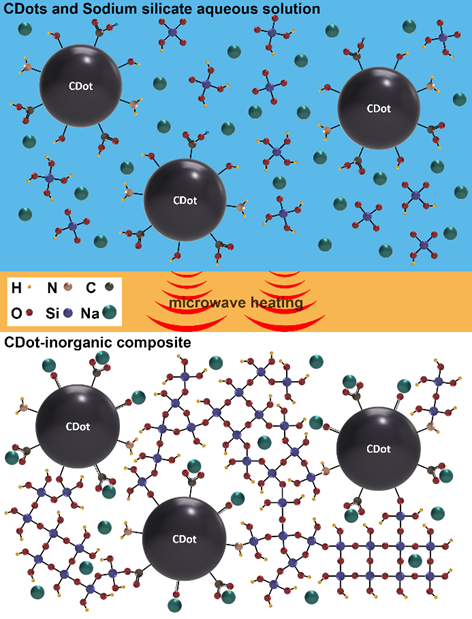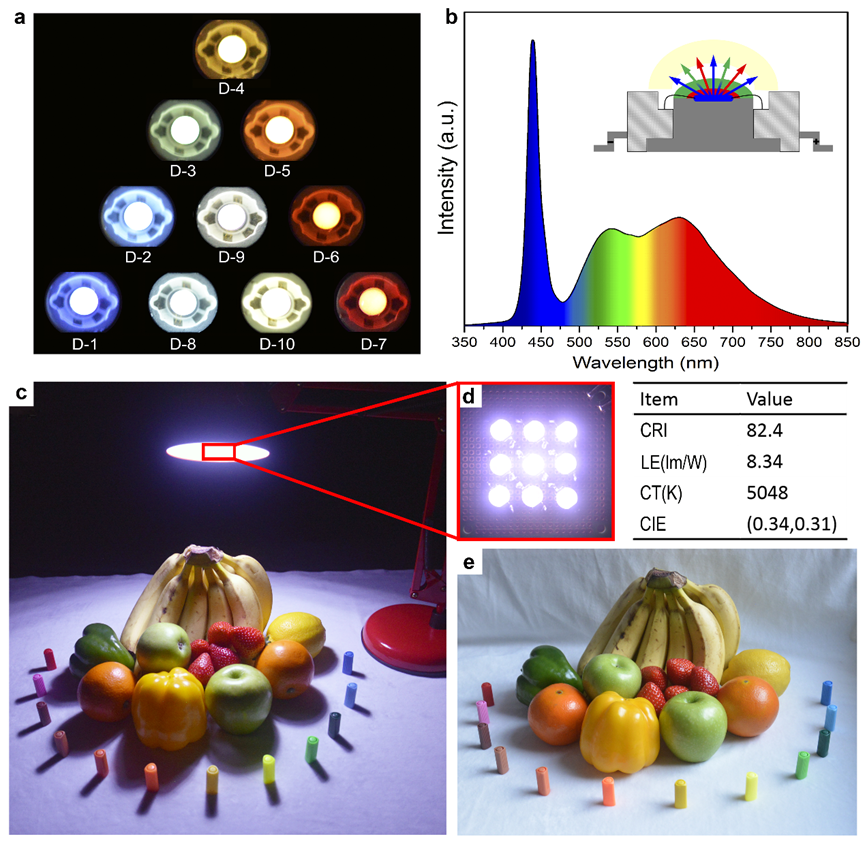Author: |
Recently, full color luminescence carbon dots (CDots) were developed for the first time by Prof’s Songnan Qu’s group in Changchun Institute of Optics and Fine Mechanics and Physics. In a convenient and fast method, full color luminescence CDots and their composite phosphors with high fluorescence quantum efficiency were achieved for white light LEDs application. This work is benefit to understand the luminescent mechanism of CDots and promote the application of CDots in the lighting devices field. Related work was published in Advanced Optical Materials (international journal, IF was 6.8), (Adv. Opt. Mater., DOI: 10.1002/adom.201700416). The first author is Ph. D. Tian Zhen, and the corresponding author is Prof. Songnan Qu.

Figure 1. (a) Full color luminescence CDots under day light (up) and UV light (down), (b) their corresponding fluorescence spectrum under excitation wavelength of 360 nm.(Photo by CIOMP)
In the last ten years, CDots were emerging as a novel nano fluorescent material attract widespread international attention. CDots possess a number of distinct merits such as low toxicity, good luminous performance, biocompatibility and wide range of raw materials, which renders them attractive for applications in bioimaging, sensor, catalysis, lasers, photoelectric devices and lighting. However, there still have two critical problems hinder the development of CDots. On the one hand, it is still lack of method to control the band-gap of CDots. On the other hand, aggregation induced quenching of CDots in the solid state constitutes a severe issue. These two problems prevent the development and application of CDots in solid state lighting.

Figure 2. Scheme of the formation mechanism of inorganic functional CDot-based phosphors from the CDot-sodium silicate solution under microwave assisted treatment..(Photo by CIOMP)
In view of these difficult problems, Qu’ group proposed an approach towards controlling the bandgap emissions of CDots to realize full-color emissive CDots from citric acid and urea, employing three different solvents (water, glycerol and DMF) and their combinations in a solvothermal synthesis. The solvents govern the degree of dehydration and carbonization processes of precursors, which results in formation of differently sized sp2-conjugated domains within the prepared CDots, leading to different color of their emission ranging from blue to the red. To prevent aggregation induced luminescent quenching of CDots, Qu’s group employed a microwave assisted treatment of CDots dispersed in aqueous solutions of sodium silicate, which immobilize well dispersed CDots in the silica network, effectively preventing aggregation of CDots and producing strongly luminescent inorganic CDot phosphors with PLQYs in the range of 30-40% in the solid state. By covering the red and green CDot phosphors on blue emitting InGaN chips, WLEDs were fabricated, solely based on CDot phosphors, with CIE of (0.34, 0.31) and the color rendering index of 82.4.
This work is supported by the National Natural Science Foundation of China (project No. 51602304), Outstanding Young Scientists Program of Chinese Academy of Sciences, Youth Innovation Promotion Association of CAS, Jilin Province Science and Technology Research Projects No. 20170101191JC, 20170101042JC, 20160520008JH, 20150519003JH, Open Project Program of the State Key Laboratory of Supramolecular Structure and Materials in Jilin University (No. sklssm201712).
Article links: http://onlinelibrary.wiley.com/doi/10.1002/adom.201700416/full

Figure 3. (a) The photograph of operating CDots based multicolor LEDs and WLEDs, (b) Emission spectra of operating CDots based WLEDs and the schematic structure, (c) Photograph of fruits and pen caps with different colors under CDot based WLEDs array and (e) photograph of the same fruits and pen caps under sunlight. (d) Photograph of the operating CDot based WLEDs array and its performance parameters..(Photo by CIOMP)
Contact:
Prof. Songnan Qu, Changchun Institute of Optics, Fine Mechanics and Physics
Email: qusn@ciomp.ac.cn
